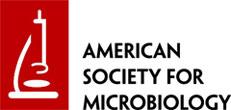Microbiology
The study of microorganisms.
Members of the American Society for Microbiology (ASM) are working with CourseSource to create a Learning Framework for the Microbiology Course. The framework presented below is a part of a larger and ongoing curriculum project at ASM, and the project has many forthcoming resources. The 27 core concepts below form a comprehensive framework for an undergraduate microbiology course, and they were published in the Journal of Microbiology and Biology Education (JMBE; Merkel, 2012). In addition because laboratory safety is such an important component of microbiology courses, ASM put forth ASM Guidelines for Biosafety in Teaching Laboratories. These guidelines were also published in JMBE (Emmert, 2013). To learn more about the ongoing curriculum projects at ASM, please see the ASM Curriculum homepage.
The ASM Curriculum Guidelines project is managed by the ASM Education Board, chaired by Mary Sanchez Lanier (Washington State University).
Download the Microbiology Learning Framework
American Society for Microbiology
The American Society for Microbiology, founded in 1899, strives to advance the microbiological sciences as a vehicle for understanding life processes and to apply and communicate this knowledge for the improvement of health, environmental and economic well-being worldwide.
Course Editor(s):
Microbiology Learning Framework
Society Learning Goals
Articles
Evolution
How is the evolutionary relatedness of organisms best reflected in phylogenetic trees?
Sample Learning Objectives- List the three domains of the phylogenetic tree of life. State a unique characteristic of each domain.
- List two features of a useful molecular/evolutionary clock.
- Explain what features of 16S rRNA make it useful to compare the evolutionary relationship between organisms.
- Determine the two most related and two least related organisms from a short list of 16S rRNA sequences.
- Draw inferences about evolutionary relatedness of organisms based on phylogenetic trees.
Why is the traditional concept of species not readily applicable to microbes due to asexual reproduction and the frequent occurrence of horizontal gene transfer?
Sample Learning Objectives- Describe the general process of sexual reproduction, and how it relates to the definition of species in eukaryotic organisms.
- Describe the general process of asexual reproduction/binary fission.
- Describe the concept of a species with regard to a core genome and genomic islands.
- Explain why the traditional definitions of species using reproductive isolation do not apply to bacteria and archaea.
- Bacterial and archaeal species are often defined as bacteria exhibiting more than 70% DNA hybridization among strains. Discuss one benefit and one problem of this definition of the species.
How do human impacts on the environment influence the evolution of microorganisms (e.g., emerging diseases and the selection of antibiotic resistance)?
Sample Learning Objectives- Define the term nosocomial infection.
- Define the term emergent disease.
- Distinguish between the terms endemic, epidemic, and pandemic.
- Describe two human practices (in medicine and agriculture) that have led to the increase of antibiotic resistance (e.g., antibiotics in feed, stopping antibiotic therapy too soon, and repeated use of the same antibiotic).
- Describe two human practices that have led to the development of dead zones in bays or oceans.
- Give an example of a disease that has emerged due to human activities, and state what those human activities were (e.g., AIDS, Ebola virus, bird flu, Lyme disease, etc.).
- Explain how public health policies (e.g., quarantine and vaccination) can alter epidemic/pandemic progression.
- Explain how not completing a full treatment of antibiotics can lead to an increase in resistance in a bacterial population.
Considering the immense variety of microenvironments, how have mutations and horizontal gene transfer selected for a huge diversity of microorganisms?
Sample Learning Objectives- List three mechanisms of horizontal gene transfer in bacteria.
- State two processes by which mutations can occur.
- Describe how mutations and horizontal gene transfer, together with selective pressure, can lead to a rise of antibiotic resistance (or xenobiotic bioremediation).
- Give an example of a bacterial pathogen that devolved naturally or artificially to become attenuated (e.g., vaccine strains, intracellular pathogens, etc.). Support the example with evidence.
- Analyze and interpret sequence data to determine if horizontal gene transfer, mutation, or recombination has occurred.
- Give an example of a trait (e.g., N2 fixation, pathogenicity island, type III secretion, etc.) that is found in diverse bacteria, and provide evidence that explains how that trait came to be.
How did cells, organelles (e.g., mitochondria and chloroplasts), and all major metabolic pathways evolve from early prokaryotic cells?
Sample Learning Objectives- Define endosymbiotic theory with respect to mitochondria and chloroplasts.
- Explain why glycolysis, the pentose phosphate pathway, and the tricarboxylic (Krebs) cycle are so highly conserved in living cells (e.g., 12 essential precursors and energy).
- State at least two characteristics that all living cells share (e.g., membrane, DNA, and metabolism).
- Describe the evidence that supports the theory that mitochondria evolved from bacteria.
- Describe the evidence that supports the theory that chloroplasts evolved from cyanobacteria.
Cell Structure and Function
How are replication cycles of viruses (lytic and lysogenic) different among viruses and how are they determined by their unique structures and genomes?
Sample Learning Objectives- Label the key parts of the virus.
- Arrange the steps of a viral infection by bacteriophage in correct order, specifically, either a temperate or lytic phage.
- Predict the replication cycle of a virus based on the genes it carries.
- Compare and contrast the replication cycles of bacteriophages T4 and lambda, including the consequences of infection.
- Compare and contrast the differences between lysogenic and latent viral infections.
- Describe how a lysogenic phage can contribute to virulence, and give one example.
Even though microscopic eukaryotes (e.g., fungi, protozoa, and algae) carry out some of the same processes as bacteria, how do many of the cellular properties fundamentally differ?
Sample Learning Objectives- Identify (model or diagram) major eukaryotic cell structures and explain their associated functions.
- State two unique structures present in eukaryotes, but not in bacteria and archaea.
- Explain why eukaryotic cells need/have organelles, while bacterial and archaeal cells generally do not.
- Compare and contrast transcription and/or translation in eukaryotes vs. bacteria or archaea.
- Explain why it is difficult to develop antifungal drugs. Describe some of the successful cellular targets that have been identified.
How do specialized structures (e.g., flagella, endospores, and pili) confer critical capabilities to bacteria and archaea?
Sample Learning Objectives- Diagram the structure of a bacterial flagellum.
- State the function of pili and fimbriae.
- List the features of endospores that allow them to survive extreme conditions over long periods of time.
- Compare and contrast the structure of cell membranes and cell walls in bacteria and archaea.
- Explain how specialized structures (e.g., pili/fimbrae, capsules, lipopolysaccharides, spores, or flagella) enable a microbe to survive in a given environment.
- Predict how losing the ability to make a specialized structure (e.g., pili/fimbrae, capsules, lipopolysaccharides, spores, or flagella) might affect survival.
- Compare and contrast the different cellular transport processes (e.g., facilitated diffusion, ion driven transport/simple transport, ABC transporter, group translocation, etc.) with regard to the proteins involved and the energy source used.
How do unique bacterial cell structures make them targets for antibiotics, immunity, and phage infection?
Sample Learning Objectives- List two structures that both Gram-negative and Gram-positive cells have in common, and provide the function of each.
- List two structures that are unique to Gram-negative and to Gram-positive cells, and provide the function of each.
- Distinguish between cell envelope structures (e.g., membranes and cell wall, etc.) in Gram-positive and Gram-negative bacteria.
- Predict whether a given antibiotic would affect Gram-positive and/or Gram-negative cells based in their mechanism of action.
- Design a target for a new drug based on the structure of bacterial cells.
- Describe how bacterial structures (e.g., peptidoglycan, lipopolysaccharides, flagella, etc.) stimulate a non-specific immune response.
- Explain how antigenic shift can result in resistance to antibiotics, viral infection, and evasion of the immune response.
How have the structure and function of microorganisms been revealed by the use of microscopy?
Sample Learning Objectives- List three different bacterial cell morphologies.
- Identify microbial structures from a given image.
- Describe how the cell structure of Gram-negative and Gram-positive cells leads to a given Gram stain result.
- Explain how bright-field microscopy works and why specimens must be stained.
- Explain how phase-contrast microscopy works and why specimens do not need to be stained.
- Decide on the correct type of microscopy and sample preparation for a given situation.
- Explain how magnification and resolution are controlled in a microscope.
- State the advantages and disadvantages of using bright-field, phase-contrast, dark-field, fluorescence, confocal scanning laser, transmission electron, and scanning electron microscopy for a given situation.
Metabolism
How can the growth of microorganisms controlled by physical, chemical, mechanical, or biological means?
Sample Learning Objectives- Define the following: antibacterial spectrum, bacteriostatic, bactericidal, antibiotic synergism, and antibiotic antagonism.
- Compare sterilization with pasteurization in terms of outcomes.
- Compare ionizing radiation with UV radiation in terms of how they kill cells.
- Predict the growth behavior of microbes based on their growth conditions, e.g., temperature, available nutrient, aeration level, etc.
- Given a particular situation, present an argument for the best method (e.g., physical, chemical, biological, etc.) for controlling bacterial growth.
- State the function of complement in the immune response.
- Explain two strategies that are used in human food preparation to minimize microbial growth during storage.
- Describe how the non-specific immune response works to inhibit microbial growth (e.g. fever, engulfment, inflammatory response).
- Compare and contrast the role of cytotoxic and helper T cells in the specific immune response.
- Explain how a vaccine can be used to elicit a long-term protective immune response.
- Given a particular organism, develop an isolation scheme using selective media.
How does the survival and growth of any microorganism in a given environment depend on its metabolic characteristics?
Sample Learning Objectives- Define cardinal temperature, maximum temperature, and minimum temperature for an organism.
- Define thermophilic, psychrophilic, psychrotolerant, mesophilic, halophilic, acidophilic, alkalophilic, etc., organisms.
- Explain the concept of diauxic growth.
- Describe how very high (or low) temperatures, pH, or salt concentration inhibit growth (e.g., membrane stability, enzyme activity, proton motive force, etc.).
- Name the four phases of prokaryotic growth, and describe what the cells are doing during each phase.
- Describe how oxygen affects the growth of aerobes, obligate anaerobes, and facultative anaerobes.
- Given the starting concentration of a culture and the number of generations that occur, calculate the final concentration of the culture.
- Explain in general terms what a chemostat is and for what it is used.
How are the interactions of microorganisms among themselves and with their environment determined by their metabolic abilities?
Sample Learning Objectives- Provide two examples of how microbial metabolism alters the surrounding physical environment.
- Define quorum sensing.
- Give an example of and explain how microbial metabolism is important to a relevant societal issue (e.g., health and disease, bioremediation, agriculture, etc.).
- Give an example of how quorum sensing is advantageous to bacterial cells in a given environment.
- Give an example where the waste product of one microorganism serves as an important substrate for another organism (e.g., ammonium-oxidizing bacteria and nitrite-oxidizing bacteria, hydrogen producers and methanogens, sulfur oxidizers and sulfur reducers, etc.).
- My Fish Tank: An Active Learning Activity for Bacterial Nitrogen Metabolism
- The Three Sisters of Agriculture: An Active Learning Activity on Symbiotic Nitrogen Fixation
- Small Organisms with Big Consequences: Understanding the Microbial World Around Us
- Application of a Bacterial Experimental Evolution System to Visualize and Teach Evolution in Action: A Course-Based Undergraduate Research Experience
- From Dirt to Streptomyces DNA
How do bacteria and archaea exhibit extensive, and often unique, metabolic diversity?
Sample Learning Objectives- List two differences between substrate-level phosphorylation and oxidative phosphorylation.
- Describe how aerobic respiration differs from anaerobic respiration.
- State the difference between oxygenic and anoxygenic photophosphorylation.
- Given an energy source and a carbon source, determine the metabolic lifestyle of an organism (e.g., chemoheterotroph, chemolithoautotroph, photoheterotroph, or photoautotroph).
- Given energy demands and available substrates, predict which metabolic pathways a cell could use.
- Given the major components of an electron transport chain, put them in order and explain how it could generate a proton motive force for the cell.
- Design a mechanism that would allow a bacterium to protect its nitrogenase from oxygen.
- Analyze the symbiotic relationship that some N2-fixing bacteria have with plants. Identify what the bacteria contribute and what the plant contributes.
- Describe the process of methanogenesis in terms of electron transport and energy generation.
Information Flow and Genetics
How can cell genomes be manipulated to alter cell function?
Sample Learning Objectives- List the common features of vectors used for cloning.
- List one example in medicine or in agriculture when bacteria acquired new genes that resulted in an altered cell function.
- Describe the mechanisms by which orthologs and paralogs arise.
- Discuss how horizontal gene exchange contributes to the evolution of a genome and a species.
- Explain how a transposon can be used to create a mutant strain.
- Design a vector for a given situation.
- Discuss two societal benefits achieved through the genetic manipulation of microbes.
- Application of a Bacterial Experimental Evolution System to Visualize and Teach Evolution in Action: A Course-Based Undergraduate Research Experience
- A 360˚ View of COVID-19
- Discovering Prokaryotic Gene Regulation with Simulations of the trp Operon
- Antibiotic Resistance Genes Detection in Environmental Samples
How is the synthesis of viral genetic material and proteins dependent on host cells?
Sample Learning Objectives- Define the terms restriction and modification with regard to a bacteriophage infection.
- Given a type of virus, list the steps that take place in the replication of its genome.
- Compare and contrast the multiplication of animal viruses and bacteriophages.
- Compare and contrast the viral enzymes needed by RNA, DNA, and retroviruses.
- Compare and contrast the host enzymes needed by RNA, DNA, and retroviruses.
- Given a description of an antiviral medication, predict whether it would be effective against RNA, DNA, or retroviruses.
How is the regulation of gene expression influenced by external and internal molecular cues and/or signals?
Sample Learning Objectives- State the role of a transcriptional repressor (or activator).
- Define the role of each of the following: promoter region, RNA polymerase, activator binding site, repressor binding site/operator, sigma factor.
- Describe how bacteria can regulate gene expression at the level of transcription and translation.
- Explain how gene regulation leads to adaptation.
- Give examples of how an internal chemical signal can control gene expression.
- Give examples of how an external chemical signal can control gene expression.
- Give examples of mechanisms commonly found to regulate the activity of transcription factors, including types of post-translational modifications and the binding of small molecule effectors/ligands.
Although the central dogma is universal in all cells, how do the processes of replication, transcription, and translation differ in bacteria, archaea, and eukaryotes?
Sample Learning Objectives- State two characteristics of the universal genetic code.
- State the average size of genes and genomes in a bacterium vs. a human.
- Explain how chromosome structure differs in bacteria, archaea, and eukaryotes (e.g., histones and circular/linear chromosomes).
- Explain the role of mRNA processing in eukaryotes.
- List the similarities and differences in transcription initiation and termination between bacteria, archaea, and eukaryotes.
- Explain how the organization of genes in an operon affects transcription in bacteria, compared to a single gene.
- List the similarities and differences in translation initiation between bacteria, archaea, and eukaryotes.
- Present an argument, using the processes of transcription and translation, to explain the evolution of the three branches of cells: bacteria, archaea, and eukaryotes.
- Compare and contrast DNA replication in bacteria, archaea, and eukaryotes.
How do genetic variations impact microbial functions (e.g., in biofilm formation, pathogenicity, and drug resistance)?
Sample Learning Objectives- Define the following: point mutation, genetic insertion, genetic deletion, and frameshift mutation.
- Given a mutation (genetic variation or change in DNA sequence), predict whether or not that change would result in a change of function for the resulting protein (phenotypic change).
- Explain Griffith’s classic experiment with rough and smooth cells. Describe the relationship between capsule genes and virulence.
- For a given point mutation, genetic insertion, or genetic deletion, describe a situation that would result in a frameshift mutation and one that would not.
- For a given point mutation, genetic insertion, or genetic deletion, describe a situation that would result in a non-functioning protein and one that would not.
- Compare and contrast the potential effects of a given mutation in an open-reading frame to a mutation in a regulatory region.
- Application of a Bacterial Experimental Evolution System to Visualize and Teach Evolution in Action: A Course-Based Undergraduate Research Experience
- Mock Drug Activity Enhances Student Learning About the Challenges of HIV/AIDS Therapy
- A CURE for Salmonella: A Laboratory Course in Pathogen Microbiology and Genomics
Systems
How do microorganisms, cellular and viral, interact with both human and non-human hosts in beneficial, neutral, or detrimental ways?
Sample Learning Objectives- State two ways that the normal microbiota are beneficial to a human host.
- Name two sites on the human body colonized by the normal microbiota, and give an example of the type of organisms found at those sites.
- Describe at least two innate physical defenses in the human body that are used to fend off an infection.
- Given a particular pathogen (symbiont), describe how it creates cell damage (benefits) in its host.
- Compare and contrast commensal, symbiotic, and pathogenic relationships.
- Explain what adaptations are necessary for a bacterium to survive in the respiratory tract, skin, intestinal tract, or urinary tract.
- Describe how the human microbiome influences the host human organism.
- Describe a situation that could lead to the normal microbiota causing disease.
- Given a human defense, describe a mechanism that would allow a bacterial pathogen to evade it.
- Bacteria to Brains in Backyard Coyotes: An Interdisciplinary Pedagogical Case Study
- My Fish Tank: An Active Learning Activity for Bacterial Nitrogen Metabolism
- The Three Sisters of Agriculture: An Active Learning Activity on Symbiotic Nitrogen Fixation
- Mock Drug Activity Enhances Student Learning About the Challenges of HIV/AIDS Therapy
- A 360˚ View of COVID-19
- The Impact of Diet and Antibiotics on the Gut Microbiome: Distance Education Variant
- Assessing in vivo Antimicrobial Activity Through the Analysis of Galleria mellonella Kaplan-Meier Plots
- Understanding Host-Pathogen Interactions With the Use of Galleria mellonella
- The impact of diet and antibiotics on the gut microbiome
- You and Your Oral Microflora: Introducing non-biology majors to their “forgotten organ”
How do microorganisms interact with their environment and modify each other?
Sample Learning Objectives- List two factors that limit growth in a batch culture.
- Define the term eutrophication.
- Choose a perturbation to a novel environment, and predict the change to the resident microbial community.
- Explain how the presence of a microorganism elicits a cellular or humoral immune response.
- Discuss an example of host-parasite (e.g., human and microbes, bacteria and phage, etc.) coevolution.
- Describe how fermentative bacteria in sourdough (or other foods) change their environment, and how that affects the initial community.
- Explain why the presence of nitrogen-fixing bacteria is often required to support other growth in a diverse ecosystem.
- Breaking It Down: What Factors Control Microbial Decomposition Rates?
- Exploring the City of Biofilms: An Engaging Analogy-Based Activity for Students to Learn Biofilms
- From Dirt to Streptomyces DNA
- The Impact of Diet and Antibiotics on the Gut Microbiome: Distance Education Variant
- The impact of diet and antibiotics on the gut microbiome
Why do most bacteria in nature live in biofilm communities?
Sample Learning Objectives- Give an example of a beneficial and a detrimental biofilm.
- List the stages of biofilm formation and maturation.
- Compare and contrast cell structure and function in a biofilm with pelagic cells.
- Explain how and why biofilm development may differ in different environments.
- Predict conditions that would favor biofilm formation and where they might be found.
- Identify the stages of biofilm development that are more susceptible to destruction.
- Describe differential gene expression in a biofilm.
- Develop a drug to prevent biofilm formation.
- Explain the role of biofilms in chronic diseases/infections.
How are microorganisms ubiquitous and live in diverse and dynamic ecosystems?
Sample Learning Objectives- List two keystone bacterial guilds in these environments: oligotrophic ocean, marshland soil, and agricultural field (or others).
- Describe an extreme environment where microbes can survive under conditions that humans cannot.
- Explain what adaptations have occurred in psychrophiles/thermophiles/halophiles, etc., that permit them to exist in their optimal environmental growth conditions.
- List the main characteristics of microbes that might be present in a given ecosystem, e.g., the animal gastrointestinal tract, the anaerobic mud layer at the pond bottom, etc.
- Speculate on what characteristics would be useful for a microbe to survive a move through interplanetary space.
- Discuss how metagenomics can be a tool to study microbes in situ and/or in extreme environments.
Impact of Microorganisms
Why have the effects and potential benefits of microbial life not been fully explored?
Sample Learning Objectives- Explain the great plate anomaly/viable but nonculturable state.
- Give an example of a process/product that was recently attributed to being carried out by microbes.
- Discuss the beneficial impact of microbes to at least two different environments.
- Predict how the removal of microbes can negatively affect a given system.
- Explain how an uncultured organism’s evolutionary relationship to other organisms on a 16S rRNA phylogenetic tree may be established.
- Describe how you would go about prospecting for antibiotics in a new environment.
How can humans utilize and harness microbes and their products?
Sample Learning Objectives- List four ways you have used a microbial product this week.
- List four microbial products that are used in agriculture (medicine or industry).
- Explain the importance of microbial fermentation products to food/beverage production (e.g., bread, cheese, yogurt, wine, beer, etc.).
- Provide examples of how microbes can be used to solve energy problems.
- Describe how humans utilize and harness microbes and their products for medicinal purposes.
- Conduct research to find the top four microbial processes that gross the most revenue on an annual basis.
- Discuss the benefits of two specific tools of modern biotechnology that are derived from naturally occurring microbes (e.g., cloning vectors, restriction enzymes, Taq polymerase, etc.).
- My Fish Tank: An Active Learning Activity for Bacterial Nitrogen Metabolism
- Using Collaborative Projects to Promote Active Learning of Microbial Skin Diseases and Their Impact on Everyday Lives
- Bringing Pasteur Back to Life: Studying the Biochemistry of Yeast Fermentation Through Discussion Groups and an At-Home Lab
- The Three Sisters of Agriculture: An Active Learning Activity on Symbiotic Nitrogen Fixation
- Small Organisms with Big Consequences: Understanding the Microbial World Around Us
- From Dirt to Streptomyces DNA
- You and Your Oral Microflora: Introducing non-biology majors to their “forgotten organ”
How do microorganisms provide essential models that give us fundamental knowledge about life processes?
Sample Learning Objectives- Describe a key study using microbes as model organisms that gave rise to insights about biology that are applicable across kingdoms and domains (e.g., Griffith’s transformation experiment; Avery, MacLeod, and McCarty’s transformation principle experiment; Hershey-Chase phage experiment; Meselson and Stahl’s semi-conservative replication; Jacob and Monod’s lac operon, etc.).
- Describe the features of Escherichia coli that have made it a model organism for studying many different life processes.
- Explain how the rapid growth of microorganisms facilitates evolutionary studies.
- Use genomic tools to trace a given human gene back to a bacterial ancestor.
- Describe synthetic biology efforts in bacteria to define the minimal genome necessary for life.
Why are microbes essential for life as we know it and the processes that support life?
Sample Learning Objectives- Provide examples of essential microbe-microbe or microbe-host relationships.
- Describe the role of cyanobacteria in the oxygenation of the atmosphere.
- Describe the normal microbiota and the purposes they serve in the environment and human populations.
- Predict the effect on a host organism if the normal microbiota were removed.
- Explain the role of natural microbial populations in bioremediation/decomposition/nutrient cycling.






